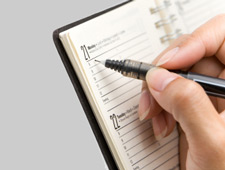- 01: Introduction
- 02: History
- 03: Propellants, Firearms, and Ammunition Development
- 04: Modern Firearms Manufacture
- 05: Small Arms Ammunition
- 06: Evidence Handling Procedures
- 07: Equipment and Instrumentation
- 08: Examination of Firearms
- 09: Cartridge and Shotshell Examination
- 10: Characterization and Evaluation of Fired Projectiles
- 11: Bullet Comparison and Identification
- 12: Gunshot Residue and Distance Determination
- 13: Toolmark Identification
- 14: Communicating Results
- Resources


Continuous Improvement
Home > Communicating Results > Written Communications > Continuous Improvement

Much like getting to Carnegie Hall in New York City, the only way to improve communication skills is through practice. However, the quality of our practice makes a significant difference. Each of the previous topics provides advice on how to become a better speaker or writer. For verbal presentations, communicators are urged to know the background, interest level, diversity, and size of their audience before preparing talks. The use of visual materials should be designed to complement major points rather than direct attention away from presenters. Body language, gestures, and movement help engage and sustain your audience, along with the appropriate use of voice intonations and inflections. Written documents typically ask more of communicators, but technical writing need not be bland or boring. Writers also must consider audience traits as well as the logic of their presentations and the clarity and compelling nature of their prose.
One option for charting your improvement is through the use of a communications log. Using this device, communicators maintain a written diary of each and every time they present their ideas verbally or in writing to their professional colleagues. The log is best kept in an electronic form or spreadsheet. While people differ in the columns they prefer, examples include day, date, time of the day (to see if your performance varies by time), intended audience (to see if you are better with small or large/professional or lay audiences), length of presentation (to see if you fade in the long run or just hit your stride), type of presentation (to see if verbal or written forms differ), self-perceptions (to see if you believe things went well or poorly), others-perceptions (to see if the audience agrees), and lessons learned (to see what you can do differently or the same next time). Remember that growth in your abilities only occurs through some form of reflection!




